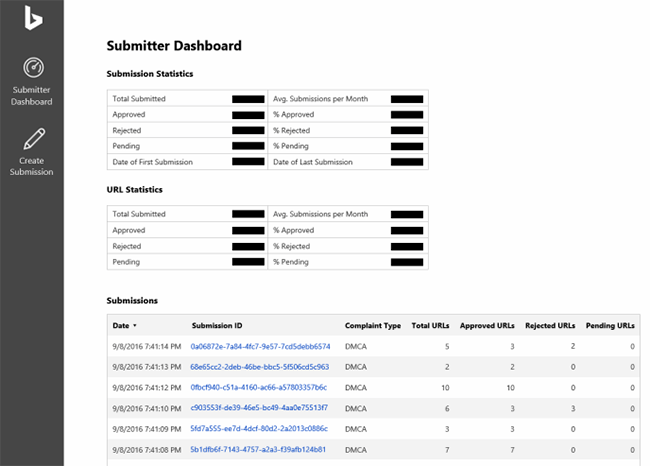There appears to be no end in sight to the apparently monumental job of removing infringing content from the Internet. If both pirates and copyright holders are to be believed, the task is pointless, since removed content quickly reappears after takedown.
Still, that doesn’t stop people trying. As reported over the weekend, Google is currently processing a record-breaking 24 million links to “pirate” pages per week, more than double the amount it received around the same time last year.
A large proportion of these links are submitted in bulk by major entertainment industry groups who have access to special tools provided by Google. Smaller operations still get access to takedowns, but some have a more laborious process to follow.
But for those wanting to have content removed from the Bing search engine, Microsoft is now providing a new system that can be utilized by copyright holders both big and small.
“Lack of communication is a leading cause of divorce. Communication is vital, and sharing the status of a copyright infringement notice is no exception. Which is why Bing just made this easier,” the company announced.
“A new online dashboard provides insight into the status of a copyright removal request, as well as providing overall historical submission statistics. This dashboard is now available for users who submit DMCA notices via our online form or API.”
In a sign that even the most humble of Internet users may today find their work being infringed online, Bing’s DMCA monitoring dashboard is not restricted to large entertainment industry groups. Anyone with access to a basic Microsoft email account can gain access, after filing a complaint with the company.
That can be done in several ways – email, an online form, or via an API (trusted bulk submitters only).
“Email is the least efficient and prone to error such as missing or incomplete information. When submitters leverage the online form or the API, they decrease the chance of rejection due to incomplete or incorrect information,” Bing Program Manager Chad Foster explains.
Once submitted, complaints are given a unique reference number which then appears in the dashboard alongside other submissions and historical statistics.
“The dashboard’s top table shows submission statistics for all notices received by a Copyright Owner or their authorized agent. A submission is accepted if it contains all of the information required by the DMCA,” Bing says.
While correctly formatted notices are accepted, Bing says that it doesn’t necessarily follow that all URLs are automatically removed. The search provider offers no further detail but it’s likely the company assesses takedown requests in a similar manner to Google.
“Bing wants to ensure that copyright owners send valid DMCA notices and that those notices are acted upon promptly. The online form and API help accomplish this. Having insight into the status of these notices helps copyright owners stay better informed and, in turn, promotes the use of such tools to help Bing respond in an expeditious manner,” Bing concludes.
While Bing is making it easier for anyone to submit and monitor DMCA complaints to its search feature, the company is still way behind when it comes to offering the kind of transparency Google provides.
Bing’s Transparency Report is a pretty basic affair that simply details the number of requests and URLs processed, those accepted, those rejected, and a final percentage.
Overall, Bing rejects less than 0.6% of takedown requests, which is less than the 2.2% currently rejected by Google. That being said, Google processes significantly more requests from a much broader range of copyright holders.











